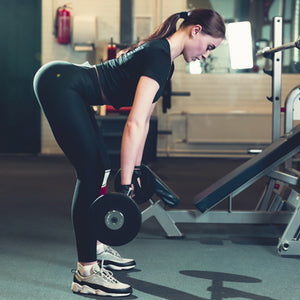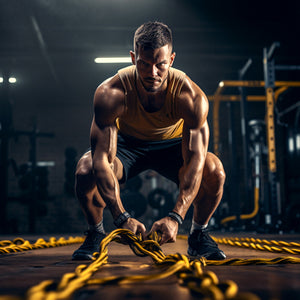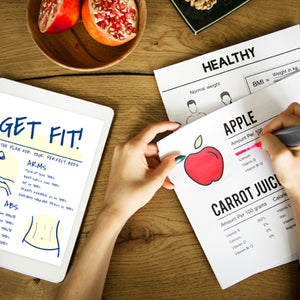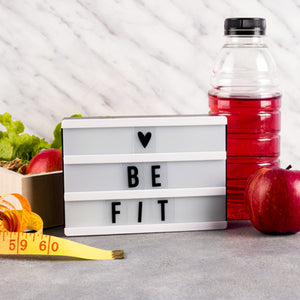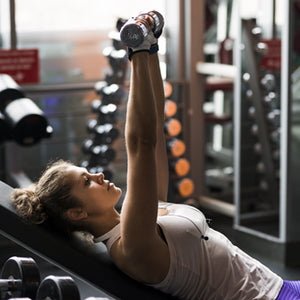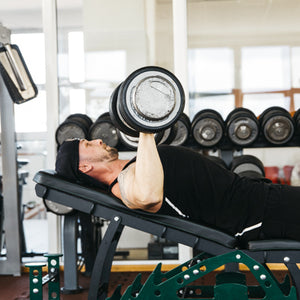
Combat Muscle Soreness With These 7 Science-Backed Tips
If you aren't into pain, having muscle soreness days after you exercise can make you question if you want to lift again.
Known as delayed onset muscle soreness, being sore is common between 24 to 48 hours after your intense workout. While DOMS is common, we don't really understand why it happens.
“I’d be rich if I could explain why your muscles ache after a workout,” quips Ryan Balmes, DPT, founder of ENDVR Health and spokesperson for the American Physical Therapy Association.
Related - 11 Tips to Build Muscle Quickly
There are a lot of theories out there which include micro-tears causing the pain, or a build-up of lactic acid.
While we don't know what actually causes muscle soreness, here are seven science-backed strategies you can use to combat muscle soreness.
Using Science Against Muscle Soreness
1.) Apply Ice
Jumping into an ice bath isn't just for elite athletes. You can use ice packs to target specific muscles or take an ice bath if your whole body is sore.
Ice packs and ice baths both decrease blood flow to your muscles, which reduces inflammation.
A study in 2016 found that cold-water immersion reduced post-training muscle soreness and provided quicker perceived recovery times.
Try to apply some ice within 48 hours of a workout for best results.
2.) Use a Foam Roller
A popular way to combat sore muscles are foam rollers. If you've ever seen someone rolling around on a foam log and screaming, you've seen someone foam rolling.
It hurts so good.
Research published in the Journal of Athletic Training suggests that using a foam roller will place pressure on our muscles and break up the fibrous tissue that's causing tension and pain.
This can substantially improve muscle tenderness.
“Rolling out helps increase mobility and range of motion,” says Ashley Borden, a Los Angeles-based certified personal trainer. “You’ll feel immediate relief.”
3.) Drink Some Coffee
Drinking a cup of Joe in the morning gives us a jolt of energy, but the coffee can also help prevent muscle aches and pains.
A study published in the Journal of Strength and Conditioning found that participants who consumed caffeine before a workout experienced less muscle soreness in the 48 to 72-hour window than those who did not have caffeine.
You don't even need that much caffeine to benefit.
Research published in the Journal of Pain found that 5mg of caffeine per 1kg of body weight leads to a 48% decrease in DOMS. This means about three cups of coffee for a 150-pound person.
4.) Try Fish Oil Supplements
Research published in the Journal of Dietary Supplements took women participants and found that those who took a fish oil supplement experienced 42% less functional soreness after 48 hours over those who took a placebo.
Research suggests that the omega-3 fatty acids help reduce inflammation and help speed up muscle healing.
5.) Get a Massage
Just like foam rolling, getting a massage helps break up the fibrous tissue that causes us pain. A massage helps alleviate pain at a cellular level, according to studies.
As part of the study, participants had muscle biopsies taken from each leg before riding a stationary bike. One leg was massaged after the ride, and another biopsy was taken from both legs 10 minutes and 2.5 hours after the massage.
The results showed the massage helped decrease inflammation and increased the cellular activity. This leads researchers to suggest a massage could have similar effects to an anti-inflammatory pain medication.
6.) Stretch it Out
While there is limited evidence showing that stretching helps alleviate muscle aches, it can help relax your body and put you into a calmer state.
Stretching may only reduce your soreness by one point on a 100-point scale, the gentle stretching is important to the cooldown process. The results will be subjective, not scientific.
While you are stretching, you can jump into the next tip.
7.) Stay Active
Staying active keeps blood pumping. Most importantly, it keeps your nutrient-filled blood pumping.
Remaining active when you are sore will help ease muscle soreness — who knew?
I know it hurts to move, but if you get moving and stay moving... it'll be better.
Motion is lotion and it's important we keep moving. If your quads are sore, focus on moving your knee and hip joint. While it won't feel great, sitting on the couch is what makes us stiff — making the soreness much worse.
Getting up and walking will increase your circulation and the production of endorphins during light exercise may help mask the pain.
A walk or slow jog for 20 minutes is more than enough to help with the pain.

